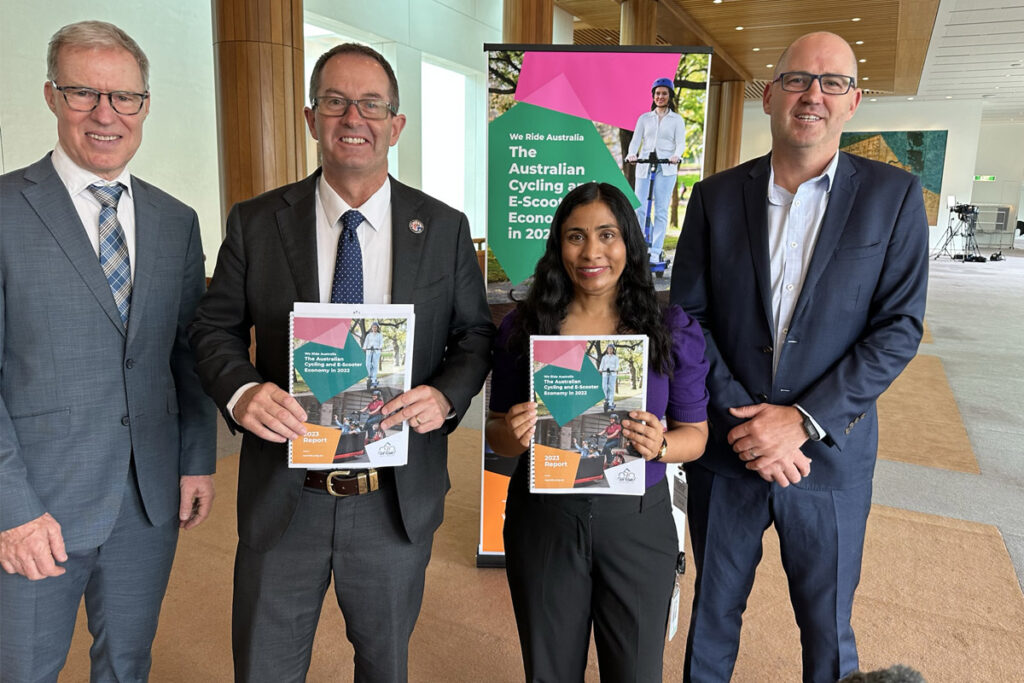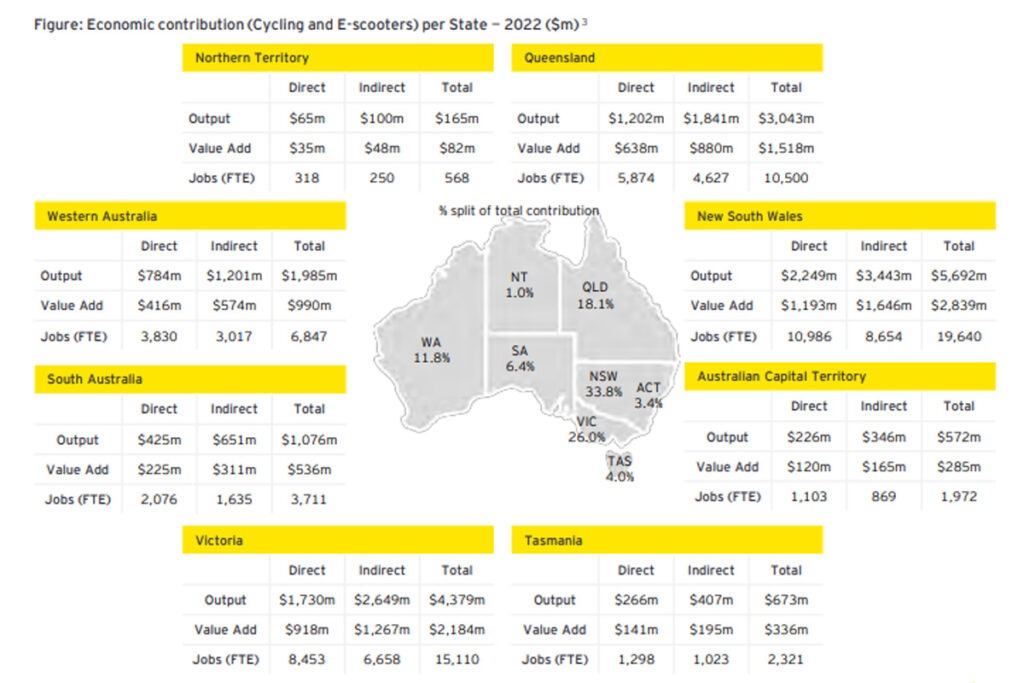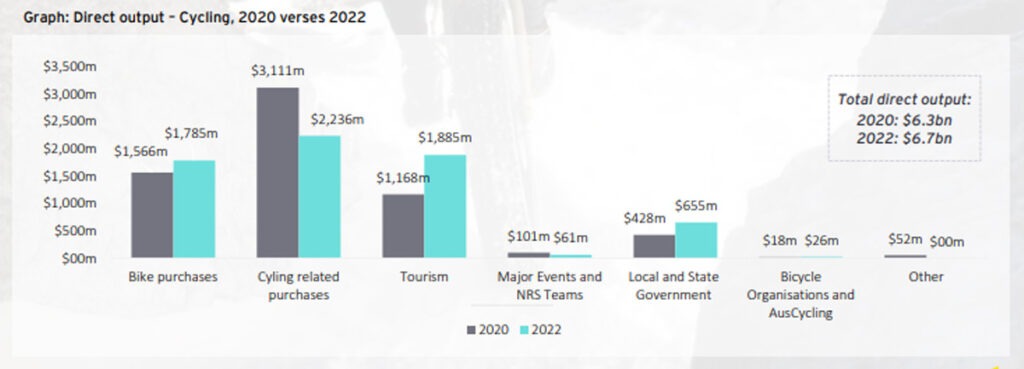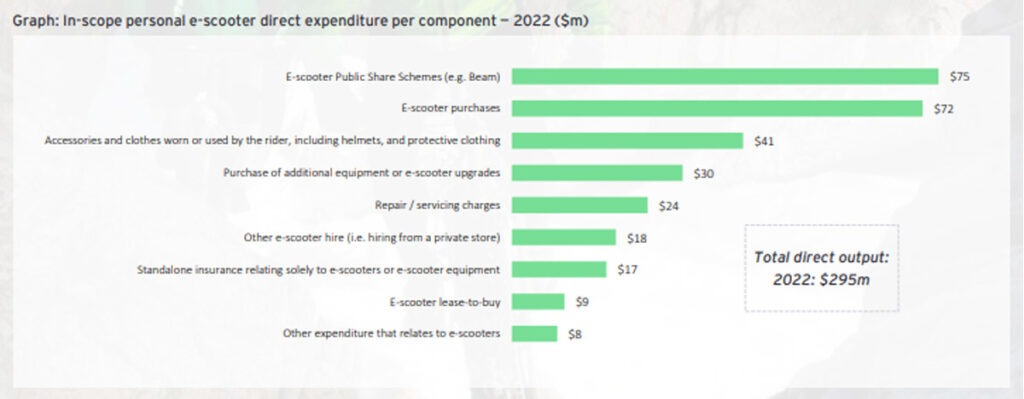How Cycling Is Saving Australia: Economic Report Reveals the Figures

Canberra, ACT
Bicycle trips replaced 3.9 billion kilometres of motor vehicle travel in Australia in 2022, saving an estimated 514,096 metric tonnes of CO2, according to the second biennial economic report released by peak cycling advocacy group WeRide Australia.
The 2023 WeRide Australian Cycling and eScooter Economy Report – the largest Australian study of its kind funded by governments, industry, motoring and bicycle groups – revealed that switch from motorist transport to cycling saved a total of 2.2 million kilograms of air pollutants such as carbon monoxide, nitrogen oxides and particulates.
To put the switch into perspective, the most recent Australian Bureau of Statistics figures estimated Australians used motor vehicles to travel a total of 255 billion kilometres in 2018 and more than 238 billion kilometres in 2020.
The WeRide report, produced by consultant Ernst & Young, goes on to estimate cycling during 2022 brought savings of $313 million to the health sector, as part of a total contribution of $945.4 million in health and social benefits.
It says while injuries related to cycling amounted to an estimated $17.1 million, that was dwarfed by the $330.4 million cycling saved by preventing other health expenses.
That is compounded by $540.4 million in productivity gains, from lowered absentee rates at work because people are more active.

E-Scooter Contributions
While e-scooters were not included in the report’s analysis of health benefits, they were incorporated into other parts of its analysis, including overall economic contributions.
The report, officially launched at WeRide’s annual Cycling Luminaries Awards ceremony in Canberra on Wednesday, estimated the cycling and scooter industries contributed a combined total of $18.6 billion to the Australian economy in 2022.
WeRide executive officer Peter Bourke said that’s more than the economic benefits generated by organised sport in all its forms in Australia.
The total figures comprises $16.9 billion from bicycle sales and activities – including tourism, events, share services, cycling organisations and logistics – $728 million from the e-scooter industry and $954 million from the health benefits of cycling.
This year’s cycling and scooter economy publication builds upon the inaugural Australian Cycling Economy 2021 Report, which estimated the cycling industry generated a total of $16.8 billion in direct and economic contributions in 2020.
Peter said while the proportion of Australians who spent money on cycling decreased from 29% in 2020 to 24% 2022, the total amount they spent actually rose. He speculated much of this increase could have been driven by people who bought bikes during Covid and in 2022 were spending money to have those bikes serviced or to upgrade them with accessories.
It was also likely impulse purchases made during Covid had a lower value than products bought by people more dedicated to cycling.

E-Bike Sales Quadruple
Key points in the report also included a massive rise in the number of e-bikes sold nationally, from approximately 54,000 in 2020 to 193,000 last year.
Peter said that came with a surprising 16% reduction in the average price of e-bikes sold but WeRide attributed that largely to a greater availability of low-priced e-bikes in Australia.
The 2023 report says 33% of Australians cycled last year, while 18% used an e-scooter.
A profile of adult cyclists revealed 96% of them are motivated to ride because of the health and fitness benefits (82% in 2020), 93% because of improved mental wellbeing and 82% by environmental reasons.
At the other end of the spectrum, 64% reported they are deterred from riding more because they don’t feel safe on roads with motorised traffic.
Leading reasons for using e-scooters included fun (97%), exploring new places (85%) and environmental benefits (80%).

Job Creation
The cycling and e-scooter industries combined to provided 33,938 direct jobs (full-time equivalent) and 26,732 indirect positions, compared to 34,295 jobs in the cycling industry in 2020.
On the subject of reduced car dependence, the report shows around one third of bicycle trips occur during peak commuting hours, replacing an annual total of 1.1 billion kilometres of motorised traffic journeys between 6am to 9am and 4pm to 6pm. This was calculated on an estimate that approximately 37% of journeys would have been completed by private car use, taxis and bus rides if cycling was not available.
It estimates there were 2.8 billion fewer kilometres travelled by car during off-peak periods which, according to the report, brings even greater noise pollution benefits than the peak hour reductions.
It says additional cars on the road have a less pronounced effect on noise pollution when there is already high traffic flows, so a reduction during off-peak times has an even greater benefit for noise pollution levels.
Partner Organisations
The 2023 WeRide Australian Cycling and eScooter Economy Report was produced in partnership with the Royal Automobile Club of Victoria (RACV) and cycling advocacy group the Amy Gillett Foundation, with financial support from the ACT, Queensland, NSW and WA governments.
Amy Gillett Foundation CEO Dan Kneipp said data in the report would help the organisation “build the case for more action to make people on bikes safe and support more people riding for more trips”.
Similarly, RACV’s general manager mobility, Julia Hunter, said her organisation is on the front foot, encouraging the Victorian and Federal governments to promote the acceleration of e-bike adoption as a “healthy, sustainable and affordable transport alternative”.
“In addition, RACV is encouraging government to improve cycling infrastructure in Melbourne and regional centres of Geelong, Ballarat and Bendigo, including the RACV super-highway cycling network of 10 priority corridors that will physically separate and protect cyclists from other road users,” she added
“Approximately 40 per cent of males and 27 per cent of women cycled in 2022, so we also still have a long way to support women riding more.”
Peter Bourke said for the first time the report also put a definitive figure on the value of cycling tourism, which was estimated at $1.9bn nationally.
The report’s major sponsors were the RACV and Safe Cycling by the Amy Gillet Foundation. Government Partners were the Queensland, NSW and ACT state governments, the WA Department of Transport and Tourism WA.
Bicycle Industry Partners were Shimano, Trek, Pon and Bosch with e-scooter partner Beam.
Bicycle Organisation Partners were AusCycling and BikeSA.
Join the Conversation
Do you believe the comparative data in the 2021 and 2023 reports show the cycling, e-scooter and broader micromobility sectors in Australia are headed in the right direction?
